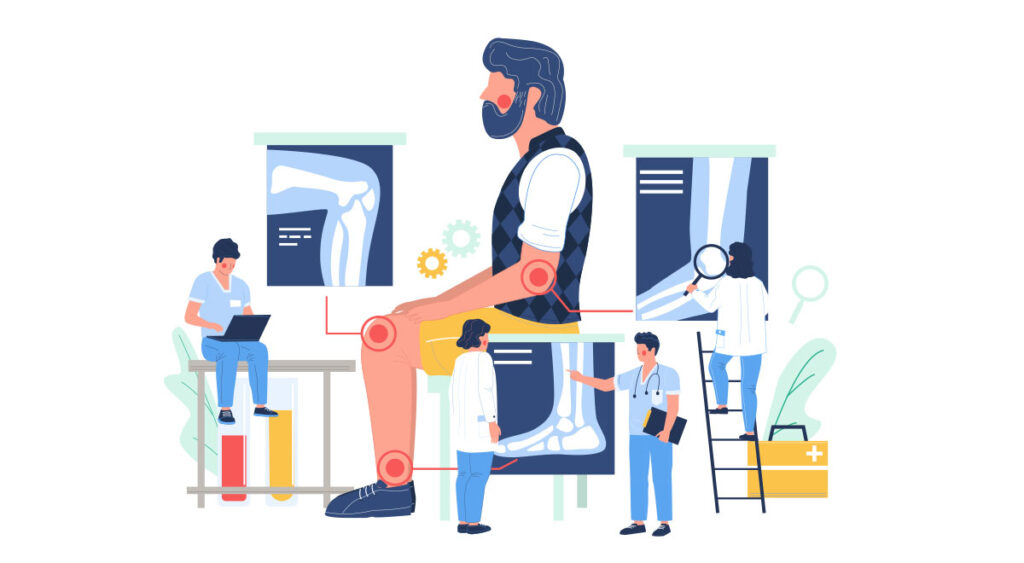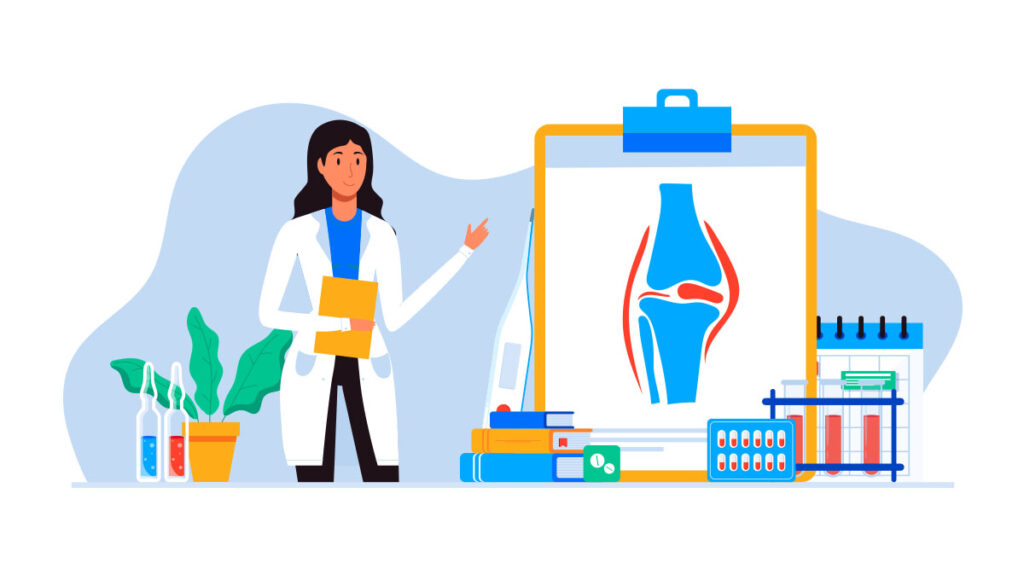The knee joint consists of bone, cartilage, ligaments and fluid, and it moves with the help of supporting muscles and tendons. When any of these structures are damaged, you are likely to experience knee pain or dysfunction in the knee. This type of pain is typically the result of injuries, overuse and arthritis, and the likelihood of knee issues increases as we age due to degeneration of the knee joint. Here are a number of different knee pain relief strategies for you to try if you are seeking treatment for knee pain.
Resting to Prevent Knee Pain

The first step in treatment for knee pain – and in most joint, muscle or bone injuries – is to rest. Taking a break from your normal activities lessens the strain on your knee, helps prevent further damage and helps provide knee pain relief.
Ice & Heat
Applying ice for under 20 minutes at a time lessens pain and inflammation in the affected area. Heat packs or hot water bottles may help provide knee pain relief temporarily.
Medication

Over-the-counter medications such as nonsteroidal anti-inflammatory drugs (NSAIDs) are typically recommended to provide knee pain relief. A doctor may prescribe you stronger medication as treatment for knee pain if an underlying condition like rheumatoid arthritis or gout is responsible. Creams containing a numbing agent may help reduce pain when rubbed onto the affected area and offer a simple form of knee pain home treatment.
Supplementation
Certain dietary supplements offer health benefits to the knee when taken consistently. Glucosamine, chondroitin and type I and II collagen are all known to support joint, muscle and bone health and may therefore help with knee pain relief over time.
Physical Therapy & Exercise
In addition to knee pain home treatments, a physical therapist can help manipulate the tissue around painful areas, as well as recommend exercises to help support the knee joint. Certain exercises may be needed to correct unhealthy movement patterns during sport or activities, while strengthening exercises may be prescribed to those with arthritic knee pain. Even if such exercises induce pain, they do not make arthritis worse; over time, they will help to maintain healthy cartilage and provide knee pain relief long-term.
Supportive Devices

Certain supportive devices can be used as a form of knee pain relief. Compression bandages help prevent fluid build-up and maintain knee alignment. Knee braces provide external stability to the knee joint, helping to reduce pain and strengthen the knee muscles. Arch support placed into footwear can help shift pressure away from the painful side of the knee.
Injections
Injecting medications or other substances directly into the joint can help provide knee pain relief. These could include corticosteroids to reduce pain symptoms, platelet-rich plasma (PRP) that can help lower inflammation and promote healing, or hyaluronic acid – a thick fluid that may help to lubricate joints, improve mobility and ease pain.
Surgery
In some cases, surgery may be required to provide knee pain relief. It is not typically necessary to have the operation immediately. Arthroscopic surgery may be used to remove loose cartilage or repair damaged cartilage, as well as to reconstruct torn ligaments. An osteotomy involves removing bone from the thighbone or shinbone to align the knee and help relieve arthritis pain. This surgery may also help to provide knee pain relief while delaying or avoiding total knee replacement surgery. A partial knee replacement is minimally invasive, where the most damaged parts of the knee are replaced with metal and plastic. A total knee replacement requires damaged bone and cartilage to be cut away from the kneecap, thighbone and shinbone and replaced with an artificial joint made from metal, plastic and polymers. Knee pain home treatments and physical therapy are usually effective enough to provide knee pain relief. However, further treatments and surgery may be considered for more serious issues. Don’t ignore or push through pain, and seek urgent care if you experience significant swelling, an inability to fully extend or flex the knee, feelings of instability in the knee joint, a fever in addition to knee swelling and pain, or an injury that induces instant pain.
